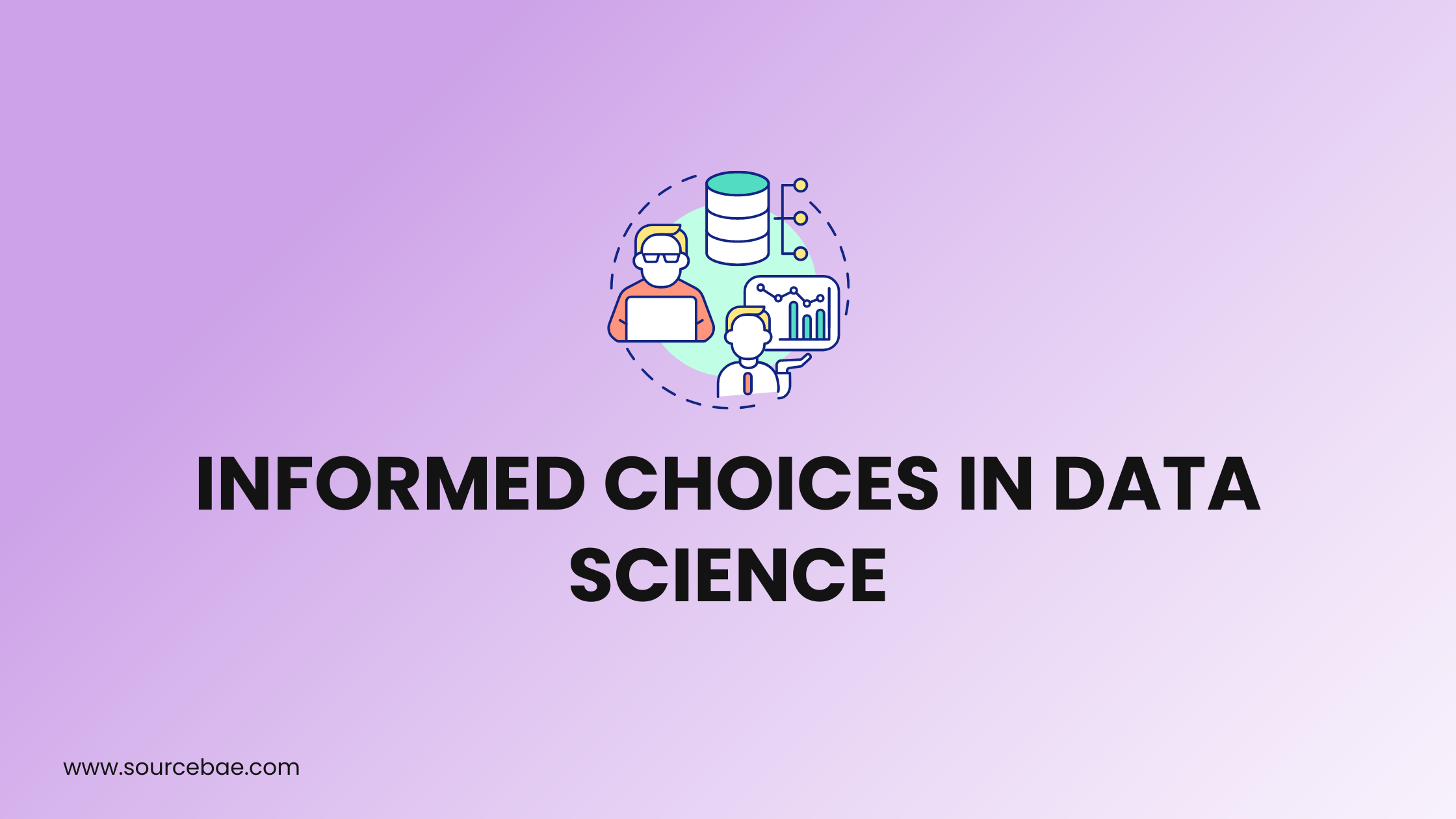In the dynamic realm of data science, making informed choices can significantly impact your success. This article delves into the essence of Informed Choices in Data Science, guiding you through every step of the decision-making process.
Whether you’re a novice or an experienced practitioner, the following comprehensive guide will empower you to navigate the complexities of data science confidently.
Informed Choices in Data Science
Embarking on a data science journey necessitates an understanding of the core principles and best practices. Informed choices lay the foundation for your success in this field.
The Data Science Landscape: A Holistic View
To make effective decisions, it’s crucial to comprehend the broader landscape of data science. From data collection and preprocessing to analysis and visualization, each stage requires thoughtful consideration. By gaining a holistic view, you’ll be better equipped to prioritize tasks and allocate resources efficiently.
Choosing the Right Tools: Leveraging Technology
Selecting appropriate tools is paramount in data science. Whether it’s programming languages like Python or R, or specialized platforms like Jupyter and TensorFlow, your choices impact your workflow’s effectiveness. LSI Keywords: “Data Science Tools,” “Best Programming Languages for Data Science.”
Data Ethics: The Moral Compass
Ethical considerations are integral to data science. Understanding the ethical implications of your decisions, such as data privacy and bias mitigation, is crucial. By making ethically sound choices, you contribute to the responsible advancement of the field. LSI Keywords: “Data Ethics,” “Ethical Considerations in Data Science.”
Structuring Your Data: A Strong Foundation
Well-organized data forms the bedrock of impactful analysis. Choose appropriate data structures and formats to ensure seamless manipulation and interpretation. LSI Keywords: “Data Structuring,” “Data Formatting Best Practices.”
Feature Selection and Engineering: Enhancing Insights
Informed choices extend to feature selection and engineering. Identifying relevant features and creating new ones can enhance the predictive power of your models. LSI Keywords: “Feature Selection,” “Feature Engineering Techniques.”
Model Selection: Picking the Right Algorithm
Selecting the right algorithm can significantly influence your model’s performance. Consider factors like complexity, interpretability, and suitability for your data. LSI Keywords: “Model Selection,” “Choosing Machine Learning Algorithms.”
Hyperparameter Tuning: Optimizing Model Performance
Tweaking hyperparameters is a delicate yet crucial task. Understand the impact of different parameters and their effect on your model’s accuracy and generalization. LSI Keywords: “Hyperparameter Tuning,” “Optimizing Model Hyperparameters.”
Interpretability vs. Complexity: The Trade-off
Balancing model interpretability and complexity is a critical decision. Complex models might yield high accuracy, but simpler models offer better explainability. Weigh the pros and cons based on your project’s goals. LSI Keywords: “Model Interpretability,” “Complex vs. Simple Models.”
Validation Strategies: Ensuring Robustness
Choosing appropriate validation strategies ensures your model’s robustness. Techniques like cross-validation and train-test splits help you gauge your model’s performance accurately. LSI Keywords: “Model Validation,” “Cross-Validation Techniques.”
Overfitting and Underfitting: Finding the Sweet Spot
Avoiding overfitting and underfitting requires informed decisions. Strike the right balance by adjusting model complexity and regularization techniques. LSI Keywords: “Overfitting,” “Underfitting,” “Preventing Overfitting.”
Data Visualization: Communicating Insights
Visualizations are powerful tools for conveying insights. Choose the right visualizations to effectively communicate complex patterns and trends to stakeholders. LSI Keywords: “Data Visualization,” “Effective Data Communication.”
Collaborative Decision-Making: Team Dynamics
Data science often involves collaboration. Making informed choices also involves fostering effective communication and teamwork, leading to well-rounded solutions. LSI Keywords: “Collaborative Data Science,” “Team Dynamics in Data Projects.”
Continuous Learning: Staying Updated
Data science is an evolving field. Choosing to stay updated through continuous learning equips you with the latest tools, techniques, and insights. LSI Keywords: “Continuous Learning in Data Science,” “Staying Updated in Data Science.”
FAQs
How important are ethical considerations in data science?
Ethical considerations are paramount in data science. They ensure responsible data usage, privacy protection, and bias mitigation, fostering trust and social responsibility.
How do I choose the right machine learning algorithm?
Choosing the right algorithm depends on your data, problem complexity, and interpretability needs. Decision trees for transparency, neural networks for complexity, and linear regression for simplicity, are examples.
What is hyperparameter tuning?
Hyperparameter tuning involves optimizing the settings that govern a machine learning algorithm’s learning process. It significantly impacts model performance and generalization.
Why is model validation crucial?
Model validation ensures that your model performs well on unseen data. Techniques like cross-validation help estimate how well your model will generalize to new samples.
How can I avoid overfitting my models?
To avoid overfitting, use techniques like regularization, cross-validation, and using more training data. These measures prevent the model from learning noise in the training data.
Why is data visualization important in data science?
Data visualization simplifies complex data and makes patterns and insights easily understandable. It aids in conveying findings to non-technical stakeholders effectively.
Conclusion
In the dynamic realm of data science, informed choices pave the way for success. By grasping the fundamentals, embracing ethical considerations, and making well-informed decisions at every stage, you can navigate the intricate data science landscape with confidence. Remember, your choices shape not only your outcomes but also the future of the field.





